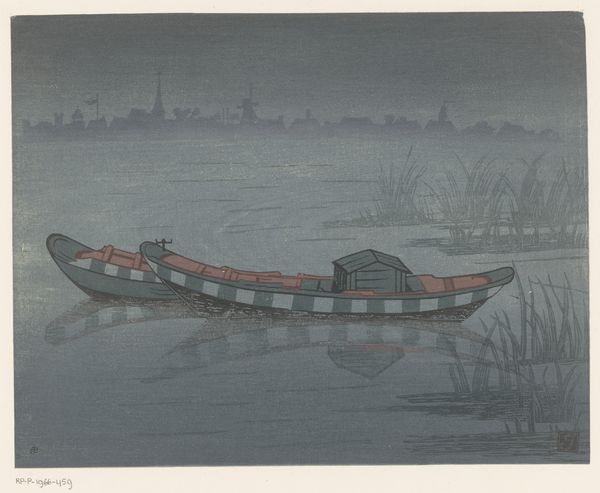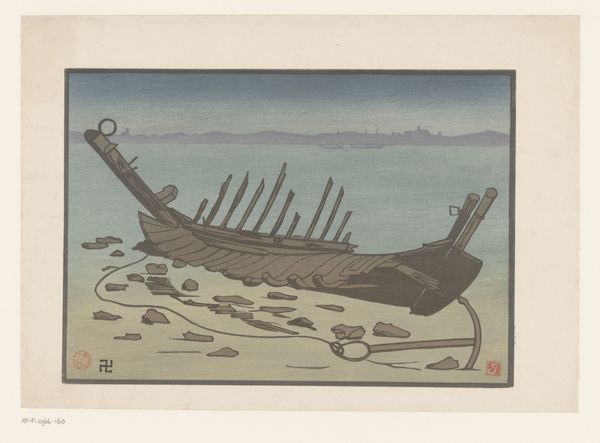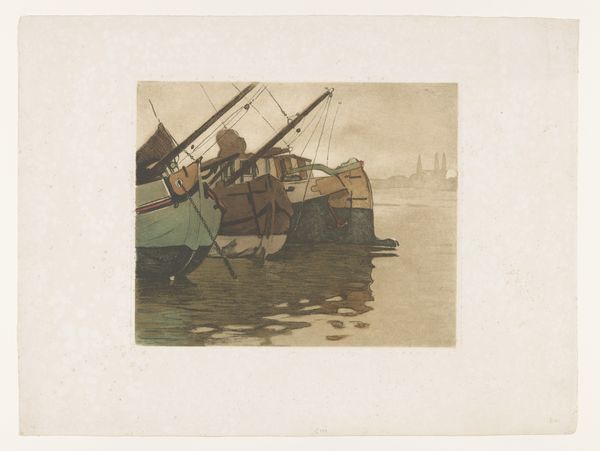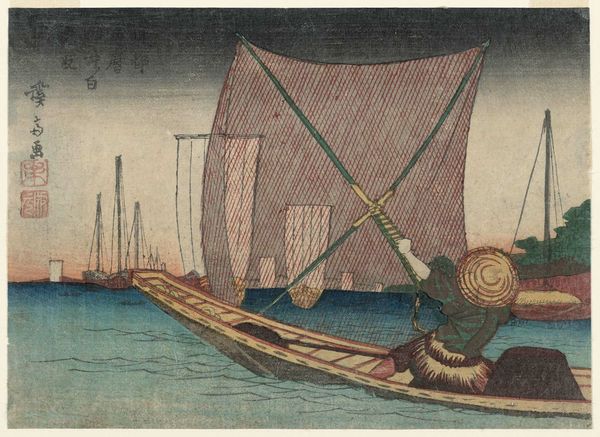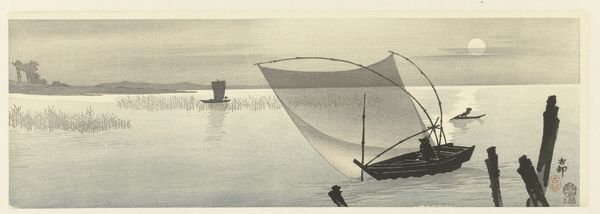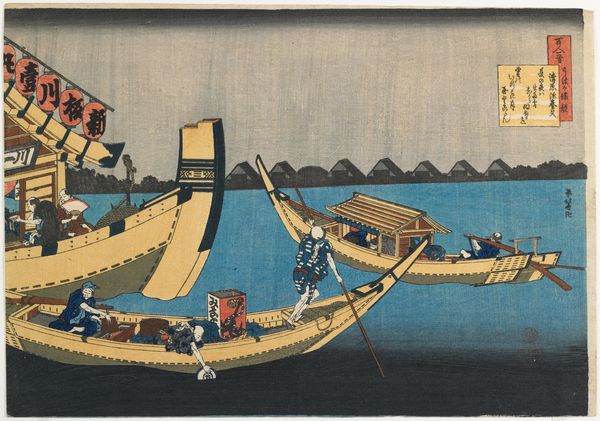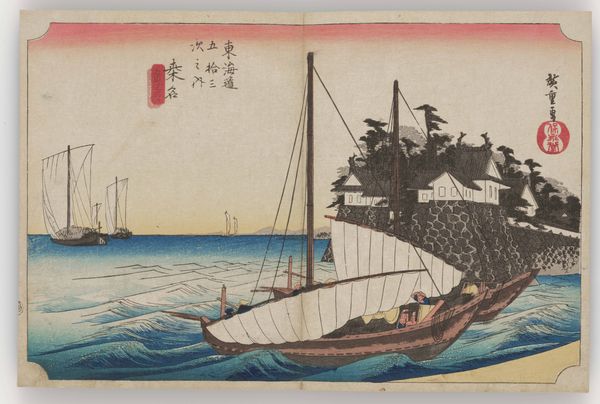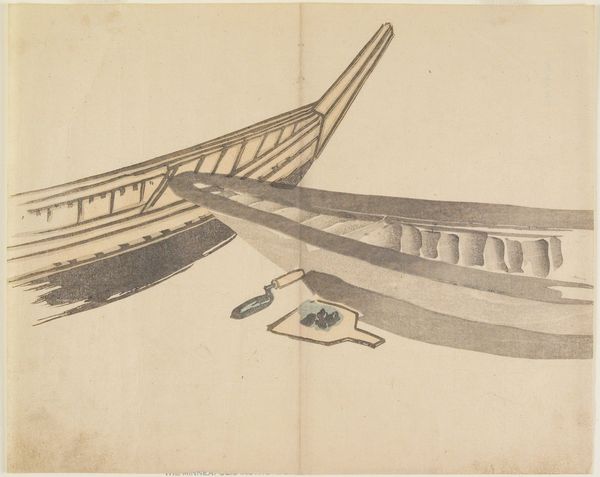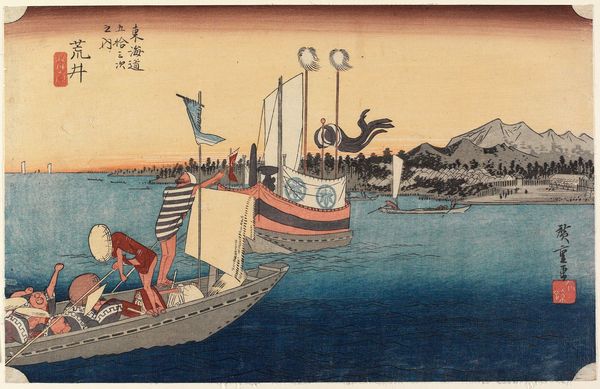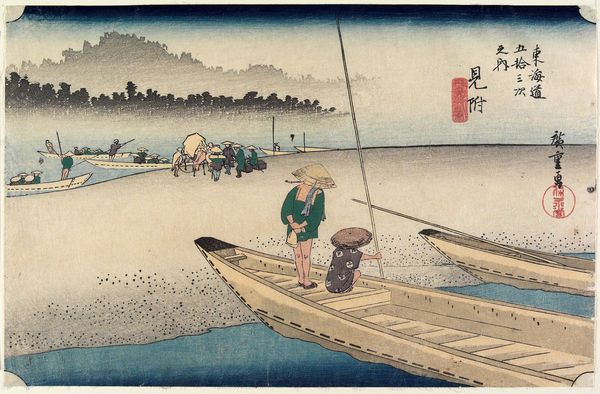
Dimensions: height 177 mm, width 229 mm
Copyright: Rijks Museum: Open Domain
Curator: This intriguing print is entitled "Roer van een schip," or "Rudder of a Ship," likely created sometime between 1868 and 1924 by Prosper-Alphonse Isaac. What are your first thoughts? Editor: Stark. Intimate, yet detached. It’s just this wedge of a boat dominating the foreground, then… everything else is misty, a kind of vague backdrop. It’s like the whole scene is receding into a half-formed memory. Curator: It does have a melancholic atmosphere. And the odd perspective draws you in; almost like you're right there, next to the boat. Look closely at the geometric patterns. Given the dates and stylistic cues like the overall composition, it appears to be a case of Orientalism through a Western lens. Editor: The triangles? And those repeated parallel lines that create the impression of depth… It's interesting you say that about cultural perspectives, the contrast of clean geometric shapes, against the very vague, barely-there cityscape in the background, could suggest the imposition of structure on something amorphous and 'other.' Curator: Precisely! Visual devices build layers of symbolic tension in a post-colonial gaze. Consider, too, the almost hyper-focus on the functional element, the rudder, with a background of ships suggesting broader journeys and encounters. It is also fascinating that the ship seems to be lacking any human presence; only showing inanimate objects. Editor: Absent drivers, or absent destination. Very insightful about what that triangle trim might say. But those boats on the horizon… even veiled in mist they do hint at industry, ambition, movement. There’s something a little sad in isolating just this single rudder, though. Like pausing, or worse… breaking down? Curator: Perhaps. It’s open to interpretation, of course. What resonates is how this seemingly simple image becomes quite loaded. Even, dare I say, poetic? Editor: It certainly lingers in the mind; a study in contrasts. A broken rudder, in the wrong hands can be far more dangerous than you imagine.
Comments
No comments
Be the first to comment and join the conversation on the ultimate creative platform.
